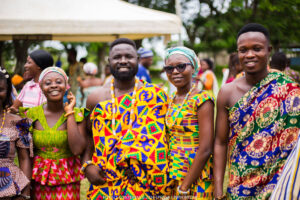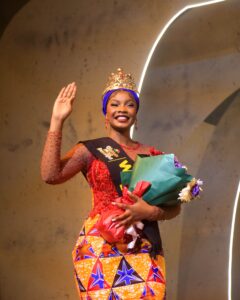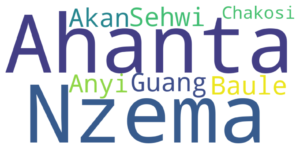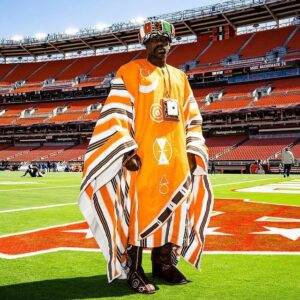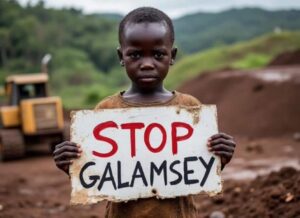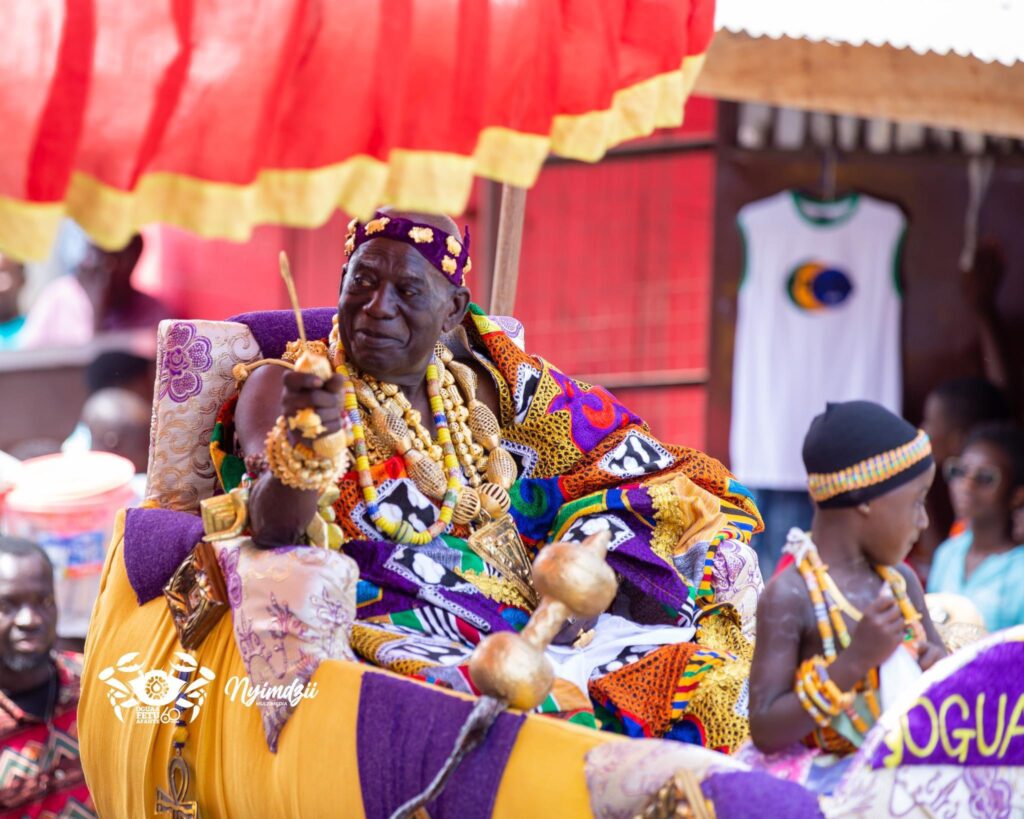
Osabarimba Kwesi Atta, Oguaamanhen. Nyimdzii Multimedia
The historic town of Cape Coast, known as ‘The town of firsts’, was alive with culture as the 60th anniversary of the Oguaa Fetu Afahye brought Akan traditions to the forefront. This historic festival, celebrated by the people of Oguaa, was a remarkable display of customs, rituals, and festivities that reflect the rich heritage of the Fante people and Akans in general. From traditional drumming and dancing to sacred rites performed by chiefs and elders, the celebration drew both locals and visitors, all eager to witness and partake in the cultural legacy that has been preserved for generations.
The Fetu Afahye is a festival observed by the chiefs and residents of Cape Coast in Ghana’s Central Region. Held every year on the first Saturday of September, this annual celebration is significant to the Oguaa people of Cape Coast. Historically, the festival originated after a devastating disease outbreak claimed many lives in the community. The people turned to their gods for intervention, seeking relief from the epidemic. As a result, the festival is now dedicated to maintaining the town’s cleanliness and preventing future outbreaks.
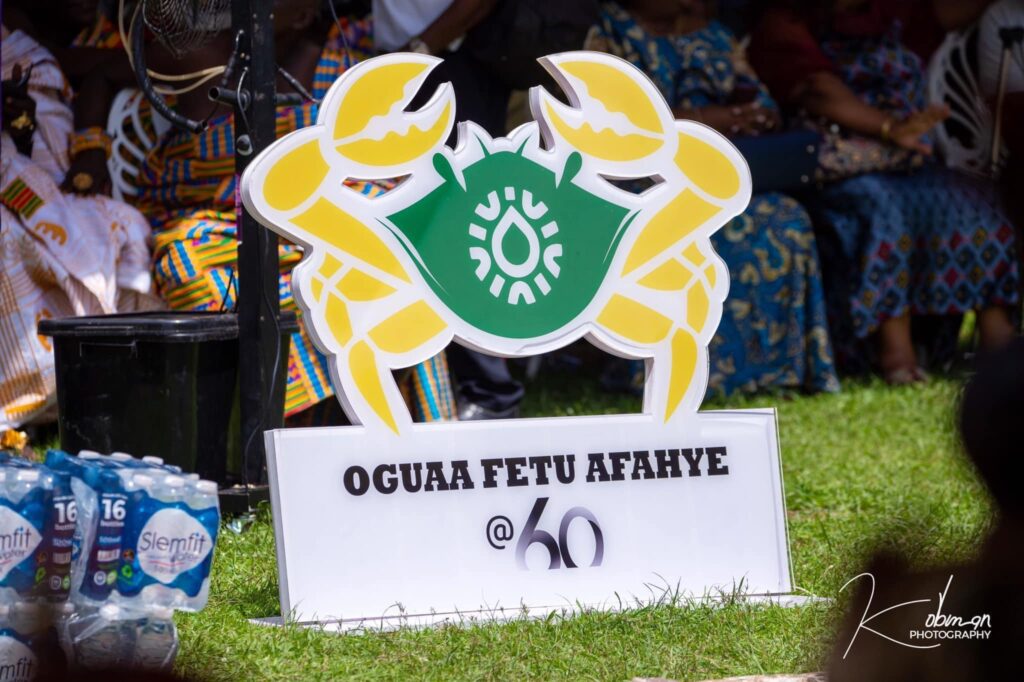
This year’s Celebration held a special significance as the chiefs and people of Cape Coast as well as dignitories including the Asantehene, came together to commemorate the 60th anniversary of the festival. This milestone did not only celebrates six decades of cultural heritage but also honored the resilience and unity of the Oguaa people where different Akan culture and tradition were observed.
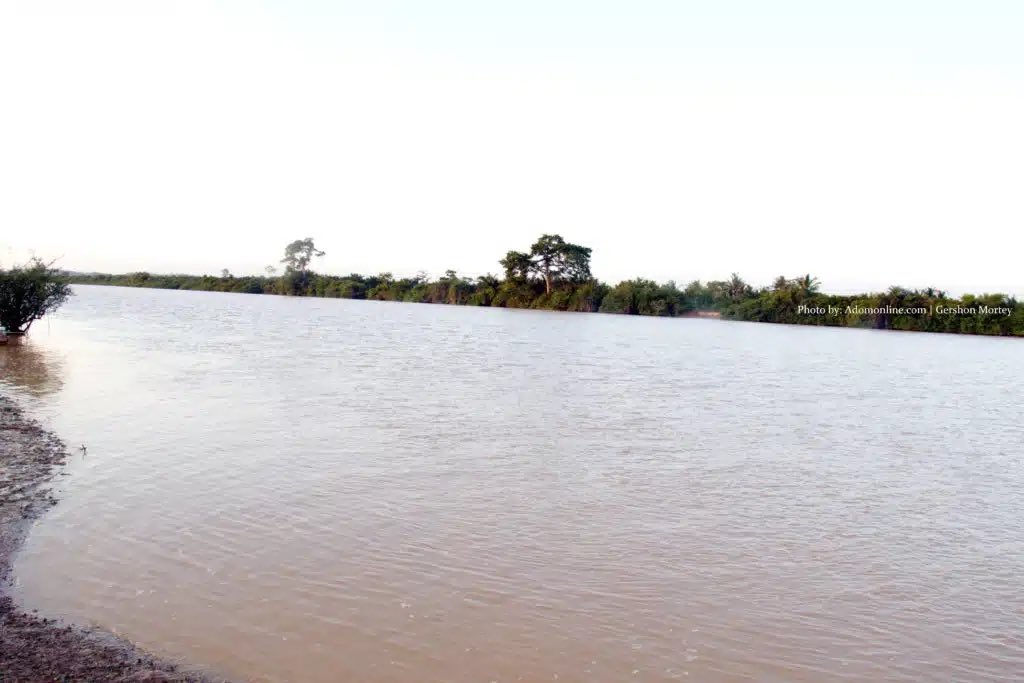
A first look at Akan customs that was observed is the Asantehene’s performance of rituals before crossing the Pra River. The Ashanti King’s avoidance of crossing the River Pra stems from a tragic historical event in 1717 when Opemsuo Osei Tutu I, the founder of the Ashanti Kingdom, was assassinated while crossing the river after a victorious war against the Akyems. He had left behind his protective amulets and armor, believing the Akyem forces were outnumbered. As he crossed the river, snipers hidden in the forest fatally shot him, with his dying words being “anka me nim a” (“if only I knew”). Since then, it has become a taboo for any Ashanti King (Asantehene) to cross the River Pra without performing special rituals, in honor of Osei Tutu I’s demise.

The Oguaa Fetu Afahye witnessed a historic encounter between the Asante and Fante dialects, both of which belong to the Akan language group. This event occurred when the Asantehene met Osabarimba Kwesi Atta II, the Oguaamanhen. Historically, both groups are believed to have originated from Techiman before the Fantes moved to their current settlement, followed later by the Asantes and others. Their meeting at the festival marked a significant moment for Akan culture and tradition, highlighting the shared heritage and unity of the Akan people.
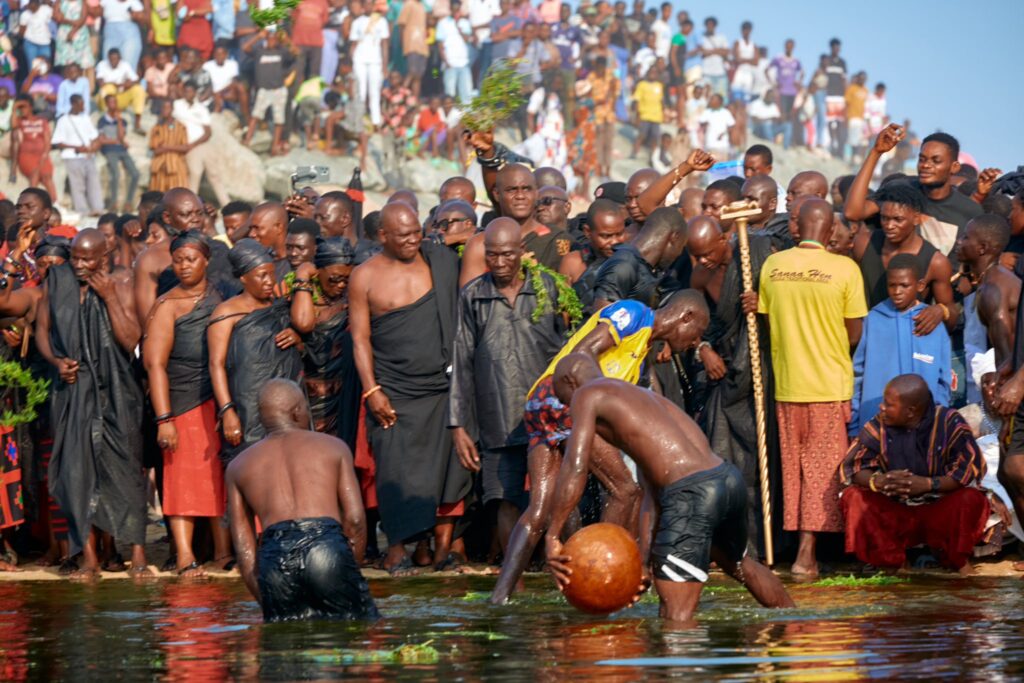
During the celebration, the tradition of Bakatue was observed by the elders of Oguaa at the Fosu Lagoon, symbolizing hopes for a bountiful fish harvest in the coming year. The word ‘Bakatue’ is derived from the Fante words ‘baka,’ meaning lagoon, and ‘tue,’ meaning ‘to puncture or break out,’ signifying the elders’ symbolic act of fishing to predict a successful harvest. Though originally a festival of the Fante people of Elmina in the Central Region, Bakatue continues to hold cultural significance for the people of Oguaa as well.

The Oguaa Fetu Afahye also featured a strong display of Asafo dance by the seven Asafo Companies of Oguaa, who historically served as the military forces protecting and fighting for the Fante people. These groups, which remain active in Fante culture today, include No. 1 Bentsir Company, No. 2 Anaafo Company, No. 3 Ntsin Company, No. 4 Nkum Company, No. 5 Nkum Brofomba, No. 6 Akrampafo Company, and No. 7 Amanful Company. The highlight of the Asafo performance was the remarkable display by a young boy known as Chief Justice, an Asafo Flagbearer, who showcased his skills and welcomed the Asantehene.
Drumming, singing, and dancing were essential elements of the historic Oguaa Fetu Afahye celebration, as no festival would be complete without them. The event featured a display of Fante cultural songs and dances, including Asafo, Adenkum, Apatampa, Osoode, and Adzewa/Adowa, among others. These performances came from both the Fantes and the entourage of the Asantehene, showcasing the rich musical and dance traditions of the Akan people.
Ivory horning, known as ‘Mbɛnsuon’ or ‘Mbɛntsia’ in Akan, was also a notable feature during the Oguaa Fetu Afahye. The sound of the ivory horns were heard as they were played during the processions of the Oguamanhene, Asantehene, and other subchiefs and dignitaries at the grand durbar.

The Afahye also featured a stunning display of colorful and beautiful Akan costumes. The Oguamanhen and Asantehene graced the event in their elegant Kente attire, though not for the entire duration of the festival. Subchiefs and the other dignitories, too, wore their finest Kente, adding to the colourful atmosphere. The people of Oguaa complemented the occasion by donning traditional outfits, with the likes of tekuwa, sleete, and kaba costumes prominently seen throughout the festivities.
In all, the 60th Oguaa Fetu Afahye was a celebration that beautifully captured Akan culture and tradition. From the display of customs, dances, and songs to the colorful costumes and the historic meeting of the Asantehene and the Oguamanhen, the festival served as a powerful reminder of the unity, pride, and heritage of the Akan people.
Author: Ebenezer Kobinah Offen
Editor: Ama Gyesiwaa Quansah

